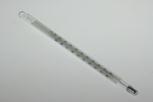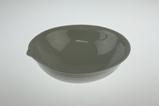
CATEGORIES:
BiologyChemistryConstructionCultureEcologyEconomyElectronicsFinanceGeographyHistoryInformaticsLawMathematicsMechanicsMedicineOtherPedagogyPhilosophyPhysicsPolicyPsychologySociologySportTourism
LABORATORY
WARM UP
1 What comes to your mind when you hear the word laboratory?
Do you know the names of any items you can see below and which can be found in a common chemical laboratory? What are they used for? Fill in the gaps with the words given.
flask (2x), shield, goggles, watchglass, chemicals, graduated cylinder, shield, vessel,
measure, protect, hold, mixing



The .. ... The .. is used The Erlenmeyer ..
is used to .. e.g. to .. is used as a mixing
the volume of liquids in ml. liquids during heating. vessel or a container.




The is used The are used This is used The .. can
to protect your face to .. your eyes for ... or holding be used as a beaker
from broken glass, chemicals. cover or for heating
chemicals and flames. or evaporating ..
containers, test tube, crucible, spot plate, evaporating dish, graduated, pipets, thermometer, beakers, temperature, filtering flask, stirring rod, measurements, funnel, pour, observing




The .. is used . are used .. are used for The is used
to remove undissolved for storing chemicals. mixing or holding to hold chemicals
solids from a liquid chemicals. They give during heating or other
mixture or to help only approximate reactions.
a liquid into a . of
container. volume.




.. are used to The measures The .. .. is The . ..
measure liquids. .. . used to stir chemicals. can speed up
Volumetric pipets are used filtration.
to measure one amount only.
one amount only.
pipets measure many
different amounts.



The . . is used The .. .. is used The . is used during heating
to evaporate a liquid from for reactions at high temperatures. You can use it
some chemicals. that occur in the wells. with a cover to keep oxygen out of
the reaction. (Next to it is a spatula)
mortar, pestle, ring stand, test tube rack (stand), burner, forceps, wash bottle, crucible tongs, test tube clamp, ring clamp, wire gauze, ring stand, gloves, clay triangle, pick up, ignite, heating, spreads, rinse, support, crush, grind




. are used to . .. The . . .. The is used for . The . is small items. supports the test tubes. We might use the flint lighter used to .. to .. the flame. glassware.



The . .. .. holds a The .. is used to hold . are used to pick up
test tube during heating. e.g. a funnel during filtering. and hold a crucible.



The .. is used to support The . . can support a beaker . . are used to
or hold a crucible during heating beaker or a flask during heating. protect our hands.
or a funnel during filtering. heating. It . the flame evenly.


The . . can The .. is a dish and the .
glassware. is the grinder. They are used to ..
or .. chemicals.
2 You can see the pictures of the most frequently used pieces of glassware, porcelain
vessels and tools and other utilities. Look at them briefly and say:
- which of them you know
- which of them you have never seen
- which of them you like to work with
3 a) Sort this laboratory equipment into the columns:
goggles lab tongs pestle cylinder spot plate Petri dish thermometer balance funnel flask mortar polarography evaporating dish test tube beaker desiccator furnace stirring rod watch glass pipet centrifuge crucible hydrometer ring clamp wire gauze burner flint lighter wash bottle hood spatula
conductivity tester weighing paper filter paper
glassware porcelain tools and utilities apparatuses
................... ................... ............................ .......................
............... .................... .............................. .......................
....................... .................... ............................. .......................
....................... .................... ............................... .......................
............... .................... ............................ ......................
....................... .................... .............................. ......................
....................... .................... ............................. .......................
....................... .................... ............................... .......................
....................... .................... ............................... .......................
....................... .................... ............................... .......................
b) Work with a dictionary: find expressions concerning the laboratory equipment that
you still miss in the previous table and add them to the list.
c) Make sentences using the following verbs in connection with the laboratory
equipment from exercise 3a). Work in pairs.
place heat evaporate remove dissolve pour
splash scratch attach pick up insert support
dispense measure rinse separate crush grind
collect weigh fill stir fold ignite
4 Work in pairs or make a competition in teams. Choose 5 items of the lab equipment, prepare their description (material, shape colour, usage). Take turns in describing and guessing the defined objects.
5 Work in pairs or small groups: You are supposed to equip a chemical laboratory for the first year training at our school. With limited space and finance you have to agree on a list of 15 items that are indispensable.
When discussing which ones these should be, use various ways of expressing agreement or disagreement:
e.g.: I cant agree, it can be replaced with....
Absolutely.
I agree with you, but...
6 Match the following verbs in column A with the nouns in column B.
A B
1. to evaporate A your eyes
2. to pour B a glass vessel
3. to measure C electricity
4. to separate D some water
5. to protect E a liquid into a container
6. to collect F gases inside
7. to conduct G chemicals
8. to support H the mass of an object
9. to scratch I a mixture
10. to transfer J the test tubes
7 Instructions for an experiment / Reporting actions (See Supplementary texts to
Unit 3).
Date: 2015-01-12; view: 4309
| <== previous page | | | next page ==> |
| Nomenclature of acids | | | READING COMPREHENSION |